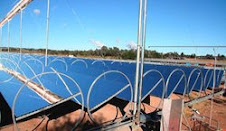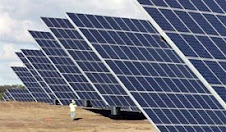By: Terence Creamer
State-owned power utility Eskom is advancing what it calls its ‘Accelerated Demand Side Management’ (DSM) programme on which it plans to spend R10-billion over the next five years in a bid to save 3 000 MW by 2012 – nearly the equivalent of a new base-load power station.
The DSM scheme, which, if successful, could help delay the introduction of new, and increasingly expensive, generation capacity, is also viewed as crucial to ensuring that South African residents and industry continue to have power during a period when Eskom will be running well below its ideal reserve margin of 15%.
The utility is currently operating with a reserve margin of between 8% and 10% and CEO Jacob Maroga has indicated that this margin could fall further in the coming five to eight years, before its first new base-load capacity begins coming on stream. He has also indicated the degree of urgency, stating that the winter of 2008 is going to be “materially tighter” than the winter of 2007, which experienced a demand peak of 36 513 MW on July 5 and had several days of operating above the 36 000-MW level.
“Next winter is going to be a far [greater] challenge,” Maroga tells Engineering News, pointing out that, despite its having approved generation-related investments of more than R204-billion for 13 000 MW, there will be a significant lag before that capacity becomes available. Indeed, the first power from the R78,6-billion Medupi station is only expected to come on in phases as from late 2011.
“We are, therefore, accelerating and intensifying our energy-efficiency initiatives, and are targeting savings of 3 000 MW at a cost of R10-billion by 2012 and 8 000 MW by 2025, which would be the equivalent of two power stations,” Maroga avers.
He tells Engineering News that some of the big DSM targets include solar-water heating, the roll-out of energy-efficiency lighting, and an enlargement of its radio and television power alert system. It will also be working with the Department of Minerals and Energy to encourage new regulations in a bid to ensure that new standards for lighting and household appliances embrace the energy-efficiency imperative.
“We are particularly keen to facilitate the scaling-up of the South African solar-water heating industry and we are doing studies to assess current capacity as well as whether we could incentivise its further development,” Maroga explains.
There will also be a drive to integrate with energy-efficiency measures being taken by municipalities, including the introduction of geyser ripple control, which could see household geysers switched off remotely in times of supply tightness.
The alert and efficient-lighting programmes, meanwhile, will be modelled, in part, on Eskom’s successful DSM roll-out in the Western Cape. This evolved during the rolling blackouts and daily load shedding that took place in the pro- vince during early 2006.
During the crisis, Eskom implemented a fast-track energy-efficiency programme, which included rolling out five-million efficient light bulbs and the innovative power alert, which is now broadcast daily on national television.
ENERGY EFFICIENCY, CLIMATE CHANGE AND CLEAN COAL
An added benefit of DSM success will be in helping South Africa achieve some of its climate-change mitigation ambitions. “This will not only assist with the capacity situation, but will also reduce environmental impacts and take costs out of the economy,” Eskom executive Dr Steve Lennon avers.
He stresses, too, that beyond diversification of Eskom’s primary-energy mix away from coal (the utility is currently 88% depend- ent on coal), it is also interrogat- ing a range of possible clean-coal solutions.
“We are looking at a range of coal-based technologies that either reduce or eliminate CO2 emis- sions.” he says, adding that underground coal gasification is a key technology in this regard.
“We are piloting the technology at Majuba. If it is successful, it will contribute to our ability to use a resource that we have in abundance without emitting CO2.” Lennon asserts, adding that underground coal gasification lends itself to precombustion extraction of CO2.
Lennon argues that it is, thus, “inappropriate” to assume that, because coal is currently a large source of CO2 emissions, it will always be regarded as a ‘dirty’ energy source.
He reveals that Eskom has a watching brief on carbon capture and sequestration programmes around the world, including programmes of the International Energy Agency and the Electric Power Research Institute.
“We are participants in the Carbon-Seque-stration Leadership Forum so that once the technology is commercially available, we can take a look at the use of that technology in South Africa,” Lennon adds.
The utility is also interrogating wind, large-scale solar power, and advanced nuclear, biomass and ocean-current alternatives. High-voltage direct current, or HVDC, transmission, and advanced energy-efficiency technologies are also under review.
“But these technologies are not going to be available overnight. Carbon capture and storage is only likely to be commercially viable in 20 years’ time. We are working with the South African government and other research entities to look at the sequestration potential in South Africa, so as to determine whether CO2 can be effectively stored,” Lennon concludes.
Best Green Stocks Investing Blog
Subscribe to:
Post Comments (Atom)
Yuya Joe Blog
Lake Ontario Waterkeeper
The Daily Beast -Politics Blog
21stArch.com - 21st Century Architecture
Original Joe College Blog
WikiLeaks Foreign Policy Analysis
AGreenRealtor.com Real Estate Blog - Ecology Energy Efficiency
Best Green Stocks Investing Blog
PV Intell Photovoltaic Solar Stocks Investing
SEARCH Leading Alternative Energy and Ethical Investing websites

Custom Search
Daily Kos
Rare Earth Stocks Research
Patrick MacManus's Blog Peace and Collaborative Development
BeesTreesFrogsElephants.com - Nature and Ecology Blog
Research Green Energy stocks, Clean Energy investing information
Find wind power investing info online, clean energy mutual funds, geothermal stocks, solar energy investments.

Green Energy Investing Network:
Green Stocks Investing Clean Power Blog
SolarIntell.com Renewable Power Investing Website
Wind Intell.com Wind Energy Stocks Company Links
Geothermal Power Investing Public Companies
PV Intell.com Leading Photovoltaic Solar Energy Stocks

Custom Search
Green Energy Investing Network:
Green Stocks Investing Clean Power Blog
SolarIntell.com Renewable Power Investing Website
Wind Intell.com Wind Energy Stocks Company Links
Geothermal Power Investing Public Companies
PV Intell.com Leading Photovoltaic Solar Energy Stocks







No comments:
Post a Comment